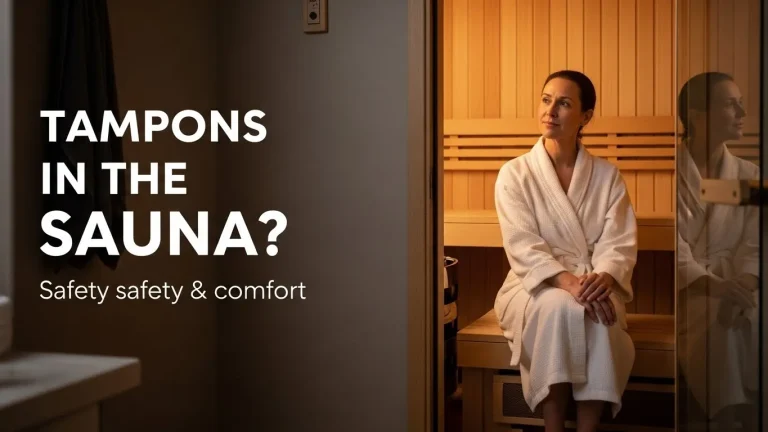My Journey with Poison Ivy: Can a Hot Tub Help with Poison Ivy?
The itching can be a thorn in your side if you’re dealing with poison ivy. While a hot tub may seem like the ideal escape, is it actually a wise decision? The short answer: it depends. Hot water may feel amazing at the moment, but it may not be beneficial for your skin in the long run.
I have a rash from poison ivy and am pondering whether a hot tub will help or worsen it. You’re not alone. Many people turn to hot water for relief, but does it actually work or could it make the itching worse? Find out how heat affects poison ivy, the best way to shower, and what really helps soothe the rash quickly.
When I first encountered poison ivy, I was caught off guard. The itching, redness, and swelling quickly became unbearable. Desperate for relief, I wondered if my hot tub could offer some respite from the discomfort. Could the soothing warmth and bubbling water be the answer to my prayers?
I’ll share my journey with poison ivy, explore whether a hot tub can truly help, share tips I picked up along the way, and offer insights from experts. Whether you’re currently dealing with poison ivy or just curious about alternative remedies, I hope my story provides some helpful guidance.
Understanding Poison Ivy
What is Poison Ivy? Many people have heard about poison ivy but hope never to encounter it. This unassuming green plant, often found in forests, fields, and even your backyard, can cause quite a bit of trouble if you come into contact with it. The culprit behind the misery is a sticky oil called urushiol, found in the leaves, stems, and roots of poison ivy.
Symptoms of Poison Ivy Exposure The effects of poison ivy exposure are usually felt within 12 to 48 hours after contact. The symptoms can vary from mild to severe, depending on the amount of urushiol that comes in contact with your skin and your body’s sensitivity to it. Common symptoms include:
- Intense itching: One of the most annoying aspects of poison ivy is the relentless itching it causes.
- Redness and inflammation: The affected area often becomes red and swollen.
- Blisters: Small or large blisters filled with fluid can develop, sometimes breaking open and oozing.
- Rash: The rash can spread across your skin, creating a pattern that might look like streaks or patches.
Check out Spot Hot Tub Folliculitis Early: 5 Symptoms to Watch Out For.
Common Treatments and Remedies When faced with the discomfort of poison ivy, most people turn to tried-and-true remedies. Here are a few common treatments:
- Topical creams and ointments: Hydrocortisone cream, calamine lotion, and other over-the-counter options can help soothe the skin and reduce itching.
- Oral antihistamines: Medications like Benadryl can help reduce itching and swelling.
- Cool compresses: Applying a cool, damp cloth to the affected area can provide temporary relief.
- Oatmeal baths: Soaking in an oatmeal bath can help soothe the skin and reduce itching.
Does Hot Water Help or Worsen Poison Ivy Symptoms?
A histamine release is triggered by hot water, which can temporarily diminish the itch, but this relief is short-lived. Once the histamine surge fades, the itch often comes back even worse than before. Here’s why:
- Heat numbs nerve endings, offering brief relief.
- Hot water opens pores, potentially spreading urushiol (the oil that causes the rash).
- Prolonged exposure can dry out the skin, leading to more irritation.
So, while that initial wave of warmth might feel like heaven, it’s a bit of a double-edged sword—offering comfort now but possibly making things worse later.
Why Does Hot Water on Poison Ivy Feel Good?
There’s the science behind it. The itch signals are effectively suppressed by overstimulation of nerve endings by hot water. Think of it like drowning out a whisper with loud music. It works, but only while the music is playing.
| Effect | Short-Term | Long-Term |
|---|---|---|
| Itch relief | Feels great instantly | Itching may worsen later |
| Skin condition | Temporary comfort | Increased dryness, irritation |
| Urushiol spread risk | Higher if not washed properly | Rash may spread |
How Heat Affects Histamine and Itching
Histamine plays a huge role in itch and inflammation. When you expose your skin to heat, your body releases more histamine, which initially numbs the area but can cause rebound itching once the effect wears off.
🔥 Pro Tip: If you want relief without the risk, try lukewarm water or cool compresses instead. They soothe itching without triggering histamine overload.
The Concept of Using a Hot Tub for Relief
Why Consider a Hot Tub? After unsuccessfully trying the usual remedies, I thought of soaking in my hot tub. Hot tubs are known for their ability to relieve muscle pain, reduce stress, and improve circulation. Could these benefits extend to easing the misery of a poison ivy rash?
The Theory Behind Heat and Water for Poison Ivy The warmth of a hot tub can potentially offer several benefits:
- Relief from Itching: Heat can sometimes interrupt the itching sensation by temporarily numbing the nerve endings.
- Increased Blood Flow: Improved circulation might help the body heal the rash more quickly.
- Relaxation: Stress can exacerbate the discomfort of poison ivy, so a hot tub’s calming effect might indirectly help by reducing overall stress levels.
Potential Benefits Using a hot tub might offer some specific advantages when dealing with poison ivy:
- Temporary Relief: The warmth can provide a short-term break from itching, giving you a moment of peace.
- Relaxation and Comfort: Soaking in a hot tub can help you feel more relaxed and comfortable, even if it doesn’t directly treat the rash.
- Improved Mood: Dealing with poison ivy can be frustrating and exhausting. The pleasant experience of a hot tub might lift your spirits.
Questions and Considerations Before jumping into the hot tub, I had a few questions:
- Could the heat make the rash worse?
- Is there a risk of spreading the urushiol oil in the water?
- How should I prepare the hot tub to ensure it’s safe for use with a rash?
Check out 7 Surprising Facts About Hot Tub Yeast Infections.
Medical Insights and Expert Opinions
Expert Opinions on Hot Tubs and Poison Ivy Curiosity about using a hot tub for poison ivy led me to consult dermatologists and healthcare professionals. Their insights provided a clearer understanding of the potential impacts of hot water on a poison ivy rash.
Potential Benefits According to Experts
- Temporary Relief: Some experts acknowledge that the warmth of a hot tub might offer temporary relief from itching and discomfort. Heat can sometimes help relax muscles and provide a soothing effect, which might benefit short-term relief.
- Improved Mood: A hot tub’s relaxation benefits could indirectly help manage the stress and frustration associated with poison ivy, potentially making the overall experience more bearable.
Potential Risks and Concerns However, there are also important risks to consider:
- Increased Irritation: The heat from a hot tub can sometimes worsen inflammation and irritation. The hot water might exacerbate the rash, making itching and swelling more intense.
- Risk of Infection: Poison ivy blisters can break open, and exposure to hot tub water could increase the risk of infection if the water isn’t properly sanitized.
- Spreading the Rash: If urushiol oil comes into contact with hot tub water, it could spread to other areas of your skin or other people.
Precautions and Recommendations If you’re considering using a hot tub for poison ivy relief, here are some precautions to take:
- Keep the Hot Tub Clean: Ensure the water is well-maintained and contaminant-free. Regularly clean and sanitize the hot tub to reduce infection risks.
- Monitor Water Temperature: Avoid extremely hot water. Opt for a lukewarm setting to prevent exacerbating the rash.
- Limit Soaking Time: Keep your hot tub sessions short to minimize any potential irritation or discomfort.
Check out Hot Tub Safety: Your Path to Relaxation and Well-being.
Consult with Healthcare Professionals It’s always best to consult with a healthcare provider before trying new remedies. They can offer personalized advice based on your specific situation and help you weigh the benefits and risks of using a hot tub for poison ivy relief.
Hot Water vs. Cold Water: Which is Better for Poison Ivy?
The best way to soothe the itch and prevent further irritation is to use cold water. While hot water might feel amazing at the moment, it can lead to worsening symptoms. Keep it cool, be gentle with your skin, and concentrate on soothing your rash instead of shocking it.
How Hot Water Can Temporarily Relieve Itching
Hot water overstimulates nerve endings, which can temporarily block the itching sensation. That’s why it feels so good—at first. However, there’s a catch:
- Heat triggers histamine release, which can make the itch return with a vengeance.
- Hot water strips natural oils, leaving the skin dry and irritated.
- Open pores absorb more urushiol, increasing the risk of spreading the rash.
So while a hot shower might give you a few minutes of relief, it’s often followed by even worse itching and inflammation.
Why Cold Water and Soothing Treatments Work Better
Cold water, on the other hand, calms the skin and reduces swelling without the risk of rebound itching. It works by:
✅ Constricting blood vessels, slowing down histamine release.
✅ Numbing the affected area, providing long-lasting relief.
✅ Preventing urushiol absorption, reducing the chance of spreading.
For even better results, try cool compresses or oatmeal baths—both offer relief without irritating the skin further.
Best Water Temperature for Showering with Poison Ivy
When it comes to showering, lukewarm or cool water is the safest choice. Here’s a quick guide:
| Water Temperature | Effect on Poison Ivy Rash | Recommendation |
|---|---|---|
| Hot Water 🔥 | Brief relief, then worsens itching | Avoid |
| Warm Water 🌡️ | Gentle on skin, prevents oil loss | Use cautiously |
| Cool Water ❄️ | Reduces itching, soothes inflammation | Best choice |
🚿 Shower Smart: Use mild soap, avoid scrubbing, and pat dry instead of rubbing. Follow up with calamine lotion or aloe vera for extra relief.
Potential Risks and Precautions
Understanding the Risks While the idea of using a hot tub to soothe poison ivy might seem appealing, it’s important to consider the potential risks involved:
- Worsening of Symptoms: Hot water can increase blood flow and potentially aggravate inflammation and itching. The warmth might make your rash more irritated, leading to greater discomfort.
- Infection Risk: Poison ivy blisters are vulnerable to infection. If the hot tub water is not properly sanitized, bacterial infection can enter the broken skin.
- Spreading the Rash: If urushiol oil is present on your skin and you enter the hot tub, it could spread to other areas of your body or even to other people who use it afterward.
Precautions to Take If you decide to try using a hot tub despite the risks, consider these precautions to help minimize potential issues:
- Ensure Cleanliness: Make sure the hot tub is thoroughly cleaned and well-maintained. Regularly check and balance the water chemistry to avoid contamination.
- Use Lukewarm Water: Avoid very hot water, which can exacerbate skin irritation. Aim for a comfortably warm temperature that doesn’t aggravate your rash.
- Limit Soaking Time: Shorter sessions are better. Prolonged exposure to hot water might increase the risk of irritation or infection.
Steps to Prepare
- Clean Your Skin First: Before entering the hot tub, wash the affected areas with mild soap and water to remove any residual urushiol.
- Shower Immediately After: After your hot tub session, rinse off thoroughly with cool water to remove any lingering urushiol and soothe your skin.
- Monitor Your Condition: Pay attention to how your skin reacts during and after your hot tub session. If you notice worsening symptoms, discontinue use and seek medical advice.
When to Avoid the Hot Tub If you experience severe symptoms, such as widespread blisters or signs of infection, it’s best to avoid the hot tub altogether. In these cases, sticking to traditional treatments and consulting with a healthcare provider is the safer option.
Check out WATER CARE TROUBLESHOOTING
Alternative Remedies for Poison Ivy
Exploring Common Treatments While a hot tub might offer temporary relief, there are several established remedies that are often recommended for managing poison ivy symptoms more effectively:
Topical Treatments
- Hydrocortisone Cream: Over-the-counter hydrocortisone creams can reduce inflammation and itching. Applying this cream to the affected areas can provide significant relief.
- Calamine Lotion: Calamine lotion is a traditional remedy that helps to dry out the rash and reduce itching. It can be applied directly to the skin.
- Antihistamine Creams: These creams can help alleviate itching by blocking the histamine response contributing to the rash.
Oral Medications
- Antihistamines: Oral antihistamines like Benadryl can help control itching and reduce allergic reactions. They are especially useful if the rash is widespread.
- Oral Corticosteroids: For severe cases, doctors may prescribe oral corticosteroids to reduce inflammation and help control the rash more effectively.
Home Remedies
- Cool Compresses: Applying a cool, damp cloth to the rash can help soothe itching and reduce swelling. This is a simple and effective way to manage symptoms at home.
- Oatmeal Baths: Soaking in an oatmeal bath can relieve itching and irritation. Colloidal oatmeal is particularly soothing and can be added to bathwater for a calming effect.
- Aloe Vera: Aloe vera gel has natural anti-inflammatory properties and can be applied directly to the skin to soothe and hydrate.
Comparing Hot Tub Use with Other Remedies
- Effectiveness: While a hot tub might provide short-term relief, traditional treatments like hydrocortisone cream and oatmeal baths are generally more effective for treating poison ivy. They address the rash directly and have been tested for safety and efficacy.
- Safety: Topical treatments and home remedies are typically safer and carry fewer risks than using a hot tub, especially regarding issues like infection and spreading the rash.
- Convenience: Remedies like topical creams and cool compresses are easy to apply and require less preparation than setting up a hot tub session.
Recommendations
For most people, sticking to proven remedies such as hydrocortisone creams, cool compresses, and oatmeal baths is likely to be more effective and safer than using a hot tub. If you decide to use a hot tub, it should be considered a supplementary method rather than a primary treatment.
Check out the Hot Tub Water Care Guide.
Personal Stories and Experiences
Real-Life Experiences with Hot Tubs and Poison Ivy To better understand how effective a hot tub might be for poison ivy relief, I reached out to others who have faced the same dilemma. Their stories and experiences provide a range of insights and outcomes.
Personal Anecdotes
- Sarah’s Story: Sarah, a hiker who frequently encounters poison ivy, decided to try her hot tub for relief after a particularly rough rash. She found that while the initial soak provided some soothing effects, the warmth eventually made her rash itchier. Sarah noted that the relief was short-lived, and she had better results with over-the-counter creams and cool compresses.
- Tom’s Experience: Tom had a different outcome. He found that the hot tub did offer temporary relief from itching and felt that the relaxation helped manage his stress. However, he kept the water at a lukewarm temperature and limited his soaking time. Tom’s experience highlighted the importance of cautious use and proper preparation.
Lessons Learned
- Monitor Your Skin: One common thread in these stories is the need to monitor how your skin reacts during and after hot tub use. If symptoms worsen, it’s best to stop using the hot tub and switch to other remedies.
- Preparation is Key: Properly preparing the hot tub and ensuring cleanliness can make a difference. Those who experienced positive results often took care to maintain good hygiene and avoid very hot water.
- Complementary Relief: For many, the hot tub was most effective when used in conjunction with other treatments. It provided temporary relief but wasn’t a substitute for more traditional remedies.
Community Feedback
- Online Forums: Many people share their experiences on forums and social media, with mixed results. Some find that the hot tub offers brief comfort, while others report that it exacerbates their symptoms.
- Healthcare Professional Advice: Feedback from dermatologists and healthcare professionals suggests that while hot tubs can provide some immediate relief, they should not replace proven treatments.
Closing Arguments:
It’s crucial to balance curiosity with caution when looking into alternative remedies like hot tubs for poison ivy when wrapping up. While the hot tub may provide temporary relief, relying on established treatments and consulting with healthcare professionals will ensure better and safer management of your poison ivy rash.
Do you want to learn more about managing your hot tub and discovering its advantages? Our goal at Hot Tub Patio is to help you maximize your hot tub experience. Get the latest updates, check out our comprehensive guides, and connect with us for personalized support by subscribing to our blog.
Share your own poison ivy remedies or hot tub experiences in the comments below—we’d love to hear from you! For more information on our hot tub products and services, visit us at Hot Tub Patio.












